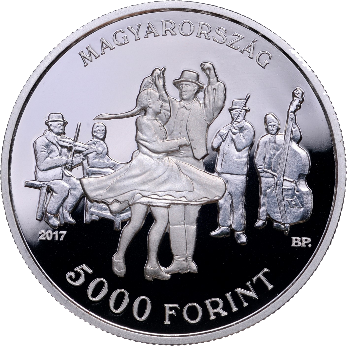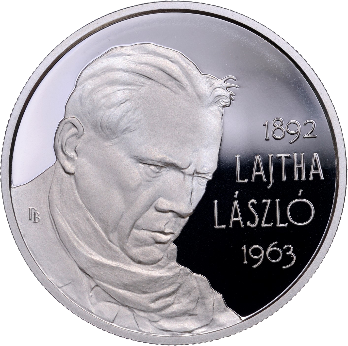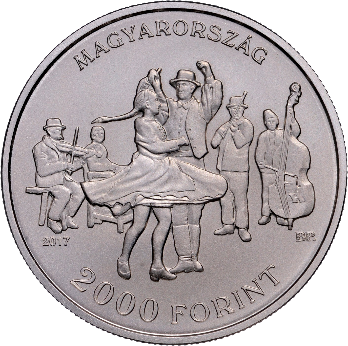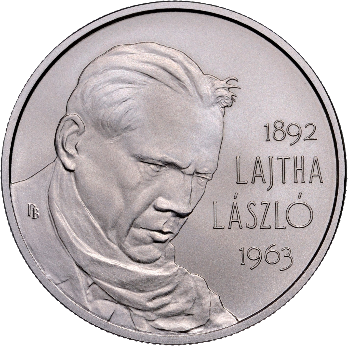23 June 2017
On 24 June 2017, as part of the Night of Museums event, the Magyar Nemzeti Bank will issue a silver collector coin with a face value of HUF 5,000 and a non-ferrous metal coin with a face value of HUF 2,000 to mark the 125th anniversary of the birth of László Lajtha. The coin pays tribute to László Lajtha, composer, ethnomusicologist, music pedagogue and the most important person of inspiration for the world-famous Dance House Movement, who is remembered as the dominant figure of a generation of Hungarian composers that entered the musical scene in the footsteps of Béla Bartók and Zoltán Kodály.
|
The László Lajtha collector coins are Hungarian legal tender, although they have not been minted for circulation purposes. The silver and non-ferrous metal coins have the same design, with the only difference being the value numeral. The coin’s obverse features the dynamic movements of a pair of folk dancers accompanied by folk musicians in the background. The motif chosen alludes to the research and collection of folk dance and folk music, one of the most important features of László Lajtha’s work. In 1951, László Lajtha was awarded the Kossuth Prize for his achievements as ethnomusicologist. He pursued a unique approach to collecting music, being the first to collect instrumental folk music in a targeted way. His meticulously detailed descriptions, whose methodology was initially debated, were taken by the Dance House Movement as an authentic source. Lajtha’s collecting work thus became the cornerstone of the Dance House Movement. The obverse of the coins also features the standard design elements: the inscription ‘MAGYARORSZÁG’, the value numerals 5000 FORINT and 2000 FORINT, the mint year ‘2017’ and the mint mark ‘BP’, which is made in special micro lettering containing a safety feature and only discernible at 10 x magnification, to protect the coins against counterfeiting. The reverse features the portrait of László Lajtha. To the right of the portrait, the coin is inscribed with 1892/LAJTHA/LÁSZLÓ/1963 in four rows positioned below each other, referring to the dates of birth and death of the composer, scientist, music pedagogue and ethnomusicologist. Adopting a somewhat unconventional approach, the collector coins were made by combining an obverse and a reverse designed by two artists. The master mark of Andrea Horváth, the designer of the obverse, is hidden in the double bass and that of Balázs Pelcz, the designer of the reverse, is hidden on Lajtha’s clothes. The collector coin with a face value of HUF 5,000 is struck in 925 ‰ fine silver. The non-ferrous metal coin with a face value of HUF 2,000 is made from an alloy of copper (75%) and nickel (25%). The two coins weigh 12.5 grams. Their diameter, at 30 mm, is the same as that of the collector coin issued in 2013 to commemorate the Hungarian Dance House Method. Both coins have a milled edge. They will be issued in a limited number of 5,000 pieces each. The silver collector coin is made in proof finish and the non-ferrous version in BU finish. In order for collector coins to play their role as a store of value and as an educational tool, the silver Lajtha collector can be purchased for three months and the non-ferrous coin without a time limit, until stocks last, from 26 June 2017 at the company’s coin shop (Báthory utca 7., Budapest V) and in the webshop on the company’s website (http://penzvero.hu/). |
|



